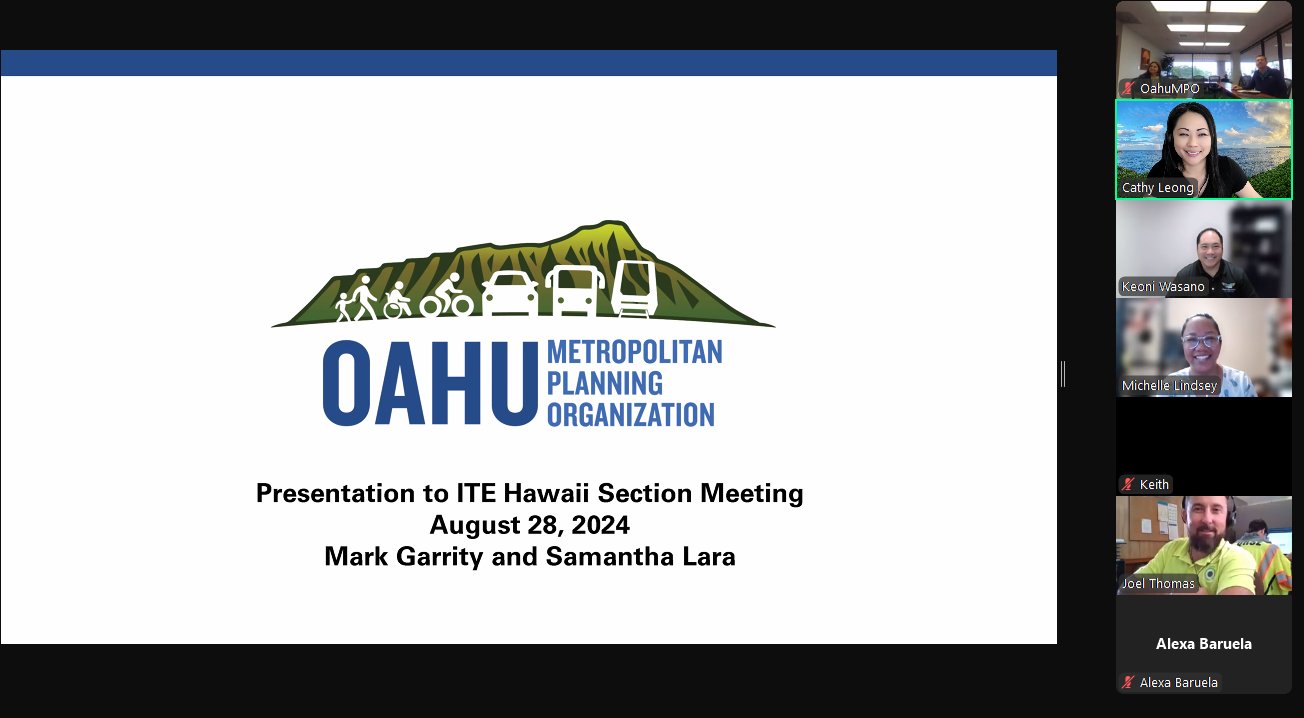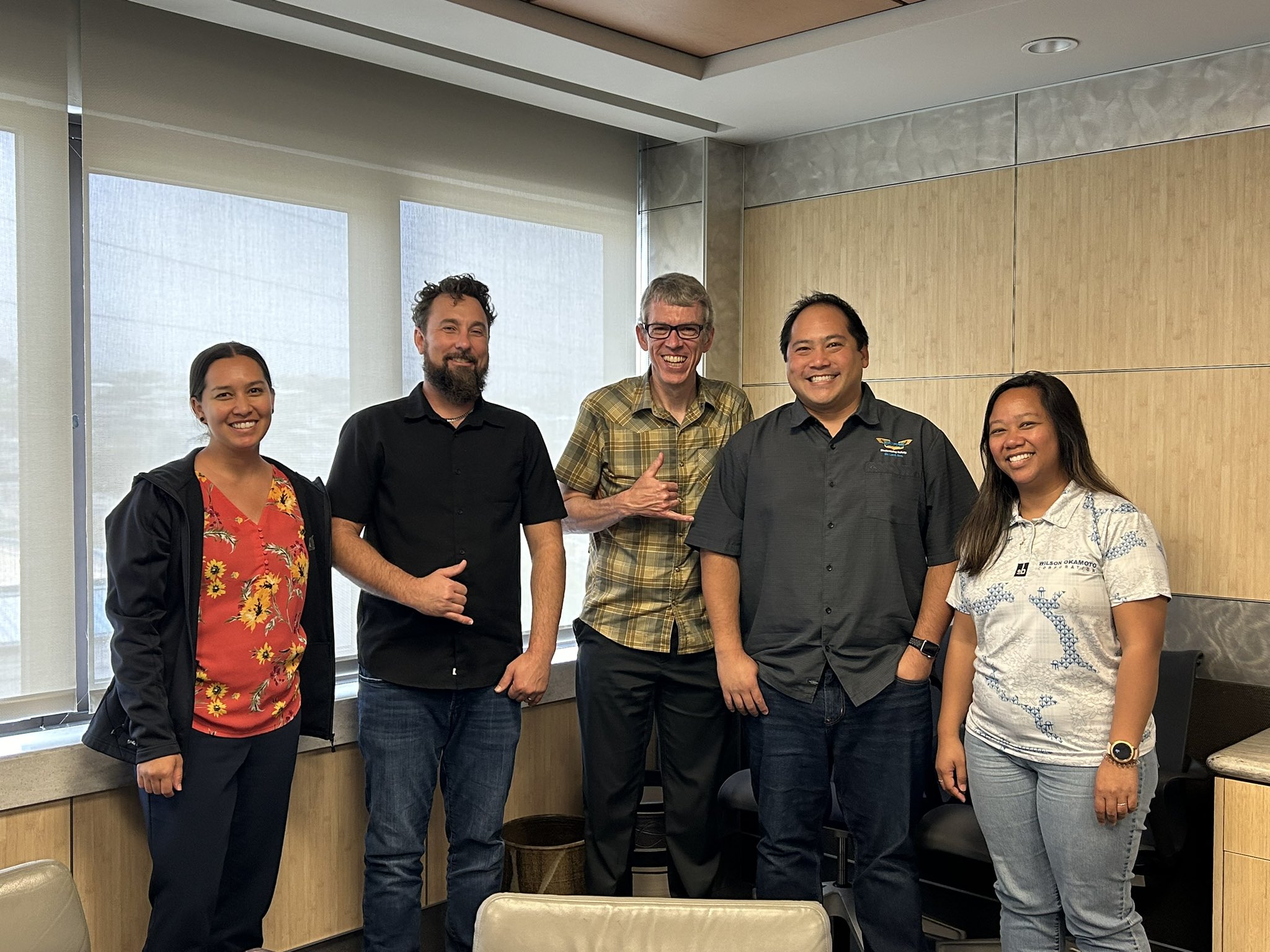President Claire Fukuoka opened the meeting by initiating introductions from everyone. After the introductions, Western District International Director Elect Cathy Leong shared some announcements. She encouraged other members to consider attending the upcoming Western district annual meeting to be held in Monterey, California in June 2019. In addition, Cathy also provided new updates on ITE International’s One Initiative which she previously presented at the October meeting. Finally, nominations are currently being accepted for anyone interested in running for the Western District elections.
Following the announcements, Vice President Cristina Rodriguez introduced guest speaker Kimi Yuen from PBR Hawaii and Associates. Kimi is a principal at PBR Hawaii and has worked on a wide-range of regional planning projects, the development of master planned communities, long-range planning, and urban and community design guidelines. The topic of her presentation was “Blending Planning with Transportation Engineering to Create a Sense of Place” in which she highlighted the need for more collaboration between planners and transportation engineers in order to advance the implementation of complete street improvements that cater to all users of the roadway. Although guidelines for complete streets have been developed, progress has been slow in incorporating them into the City and County standards for roadway design. She then discussed PBR’s involvement in the South Kauai Community Plan (SKCP) in which they collaborated with transportation consulting firm Fehr and Peers along with the County of Kauai to create a multimodal transportation plan that incorporated the resident’s requests for roadway improvements that also address pedestrians and bicyclists concerns. In addition, the SKCP also adopted a form-based code to revise existing zoning regulations in key town core locations. While conventional zoning is based on segregation of land uses, form-based codes address the relationship between the form and mass of buildings in relation to one another and the scale and types of roadways along these developments. With a form-based code, roadway designs are “married” to the adjacent land uses and as such, the applicable design standards vary based on the location. The presentation ended with a discussion with many members and guests sharing their insights on the challenges of updating the design standards and potential steps to help advance the change.




